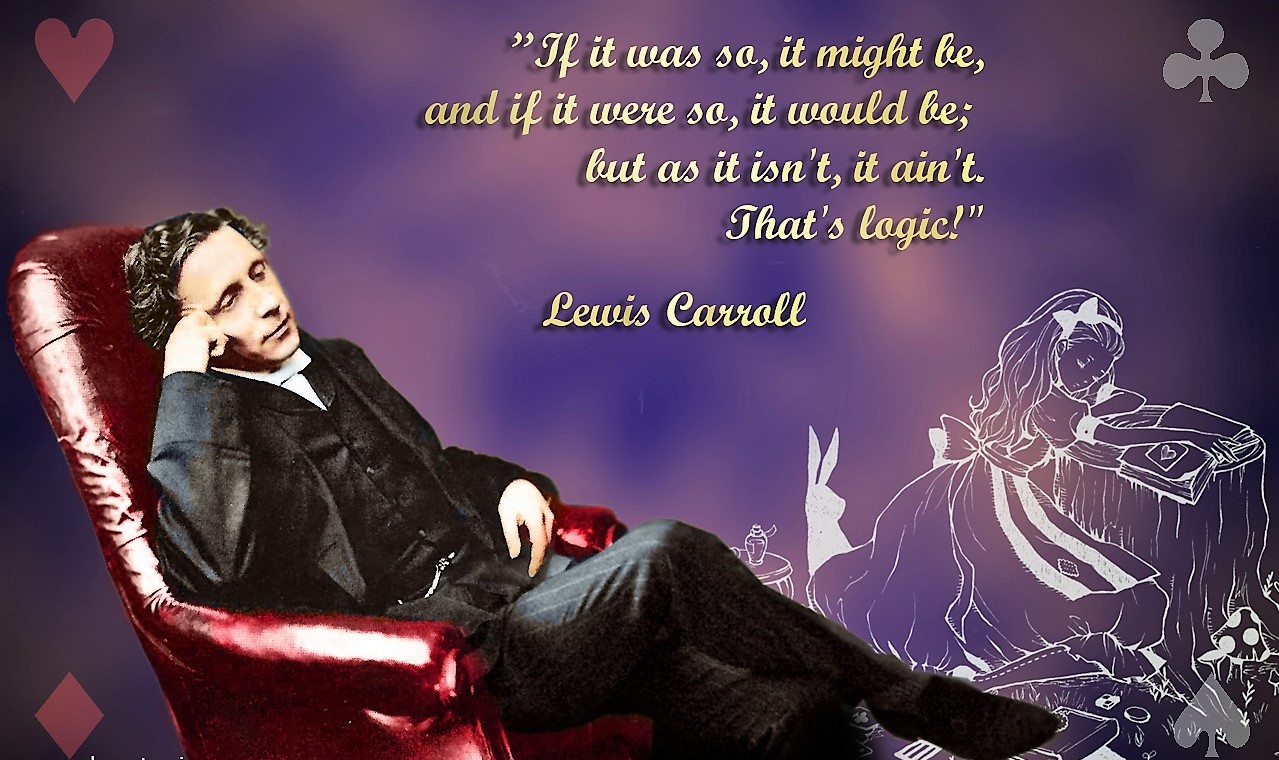Lewis Carroll’s Symbolic Logic Chair of Philosophy Several expressions have been coined (and many are still in use) to name the new logic that was developed from the mid-nineteenth-century onwards in the footsteps of logicians such as George Boole and Gottlob Frege. It has been known as mathematical logic, algebraic logic, algorithmic logic, logistic, new logic, modern logic, symbolic logic, etc. The latter was chosen in the 1930s by the founders of the Association and Journal of Symbolic Logic, which consequently contributed to its survival and circulation. Though earlier occurrences do exist, this expression seems to have been popularised by John Venn in the second volume of his trilogy: Symbolic Logic (1881, second ed. 1894). This expression had the advantage of indicating clearly what was seen as the most perceptible feature of this new logic: its thorough use of symbols. From this perspective, the very idea of symbolic logic does not assume any a priori relation to mathematics. All that is required for a logic to be recognised as symbolic, is a broad use of symbols to represent logical operations.
The aim of this tutorial is to discuss this symbolization process through the singular case of Lewis Carroll’s logic. What makes the author of the Alice tales so special is that he believed in the utility of symbolic logic in daily life, and as such refused to simplify his logical system for the sake of convenience, as most his colleagues did and overtly admitted. He regarded his logic treatise as a “work for God”, that would help to reason in everyday circumstances. Consequently, he designed his logical theory in such a way as to agree both with the “accepted facts of Logic” and the “actual facts of life”. This principle differentiates his logic from most of the symbolic systems of the time.
Everyboy interested in logic and Lewis Carroll is welcome to join. There is no specific prerequisites. The tutorial will be divided in the following three sessions.
I. Logical Symbolism
This part will be devoted to giving an overview of how symbolic logic was developed and what logical notations, diagrams included, were used. The idea is to see how the evolution of those symbolisms led slowly to the standard notation (if any) we use today, notably after Peirce, Peano and Russell. The point is to highlight the difficulties raised by the introduction of symbolism in logic and to identify the criteria that determined the choice, the design and the neglect of specific logic notations. This is an essential point to understand what symbolic logicians, Carroll included, were doing at the time. II. Carroll’s logical theory
This part will be devoted to the exposition of Carroll’s logical theory, mostly as it is exposed in his main work: Symbolic Logic (4th edition, 1897). We will examine his typology of propositions and his logic notation. Then we will pay particular attention to some specific features, notably the existential import of propositions and the theory of non-existent objects and classes. We will see that Carroll explored some unusual paths that made him solve some uneasy problems that faced his colleagues, but that also prevented him from making significant advances due to the complexity of the logical notation and system he got. |
III. Inferring
In this last part, we will discuss the raison d’être of Carroll’s symbolic logic: the problem of elimination. That is how to find the conclusion that is to be drawn from a set of premises, regarding the relation between given terms, by eliminating the “middle terms”. It is for the purpose of solving this central problem that mid-nineteenth century logicians invented symbolic, diagrammatic, and sometimes mechanical, devices. We will expose some of Carroll’s methods for handling such “logic sequences”, as he called them. Finally, we will briefly discuss two papers on hypotheticals that Carroll published in the journal Mind: “A logical paradox” (1894) and “What the Tortoise said to Achilles” (1895). These papers have been widely discussed by nineteenth and twentieth century logicians (Peirce, Russell, Ryle, Prior, Quine, etc.). The first paper is often mentioned as a good illustration of the paradoxes of material implication while the second gave rise to what is known as the paradox of inference. Bibliography
Useful links
The Lewis Carroll Society (UK) Lewis Carroll Society of North America The Complete works of Lewis Carroll, with the Illustrations by John Tenniel, 1939, courtesy of Gesellschaft der Arno-Schmidt-Leser. Back to the 5th Universal Logic School ! | ||||
